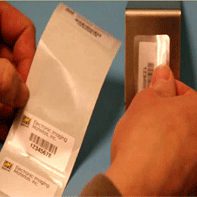Atherosclerosis, hardened arteries, a condition of plaque build-up in the arteries… Studies have been conducted throughout the years, but none such as the one MESA has put into action. MESA―short for the Multi-Ethnic Study of Atherosclerosis―is sponsored by the National Heart, Lung, and Blood Institute of the National Institutes of Health, has made headway in studying the sub-clinical indications of atherosclerosis. They turned to us for the cryovial labels they needed.
Well that sentence was a mouthful! How about we break it down into parts, starting with what atherosclerosis is… 
“Atherosclerosis” is a condition where plaque (not the kind hanging on your wall) collects along the walls of arteries then thickens and hardens, causing a blockage to the blood flow. Complications from atherosclerosis, aka arteriosclerotic vascular disease or ASVD, include damage to the organs due to lack of blood, too little blood to the legs or feet, heart attack, coronary heart disease, stroke or transient ischemic attack. (A “transient ischemic attack” or TIA is really a mini-stroke or warning stroke which occurs when too little oxygen reaches the brain causing dizziness, blurred vision, numbness and even unconsciousness.) Situations that cause TIA can also cause dementia.
The scary thing about all of this? Many people who have atherosclerosis do not even know they have it. That is where MESA comes in. MESA studies the sub-clinical indications of atherosclerosis. “Sub-clinical” means that the person who has the disease does not even know they have it since there are no apparent signs or symptoms. The disease flies below the radar where it can wreak as much havoc as its little heart desires while the person slowly becomes sicker. That is why studies focusing on sub-clinical diseases, like the one MESA is conducting, are so important.
MESA started their study with 6,814 initial participants throughout four ethnicities―African American, Chinese, Hispanic and Caucasian. The participants agreed to take four exams throughout their lives, as well as answer follow-up and check-in calls that they received from the researchers. To study all these people, various field centers were opened at multiple universities. The central lab that processes all the biological samples and records is located elsewhere. At the hub of all these field centers and laboratories is another university coordinating the data collection center. Phew, that’s a lot of different places spanned out over a great distance.
Now let’s factor in the amount of data that is collected from the various tests. First, a baseline sample is taken from each of the participants to track the various indications of atherosclerosis― for example, inflammation. During the exams, various tests including MRIs, CT scans, and ultrasounds may be performed. If blood is drawn, up to 11 test tubes can be filled. Eleven―that in itself is quite a lot of blood but it does not end there. Those blood tubes are then divided into small cryovials; up to 30 cryovials can be filled from those eleven test tubes. After the samples are taken, the cryovials are packed in dry ice as they must withstand cold temperatures (down to -80° C) and then shipped to the central lab for processing. The data from the lab tests is then sent to the data collection center.

Goodness that is an awful lot of information and samples to keep track of! That is where Electronic Imaging comes in. To give you an idea of the scope of the MESA labeling needs―their initial study required 60 labels per person― 60 per person! That’s over 400,000 labels! Now that is a lot of labels!
Since each of the labels associated with the patient needed the same patient number, EIM wound up printing multi-part sets of barcodes to keep all the patient information going to the same database record. Along with the patient’s ID number, specific test numbers were included to identify the various blood tubes, cryovials, urine samples, paperwork, patient ID tags, and various other tests. As the program continued, families received color-coded ID tags as did secondary studies that were uncovered on issues not directly involving sub-clinical atherosclerosis.
This project is an example of one of the more complicated cryovial labels assignments EIM has undertaken. Over several years we have proudly produced over two million White CryoLabel® Labels (that withstand cryogenic storage conditions) for MESA. Fortunately, we are always ready for the challenge. According to one dedicated MESA representative, we are the only organization that has the labels they need in stock, ready-to-print and customizable. We offer our services at a competitive price, including color-coding. We are also quick to deliver―even when there may be delays in determining what tests are to be done and what data needs to be collected. Most importantly, we have not made a single printing or shipping error for any of their orders! That’s zero (0) out of over 2,000,000 labels―error-free!! Service and solutions like this are what has made Electronic Imaging Materials the sole provider for all of MESA’s labeling needs.




